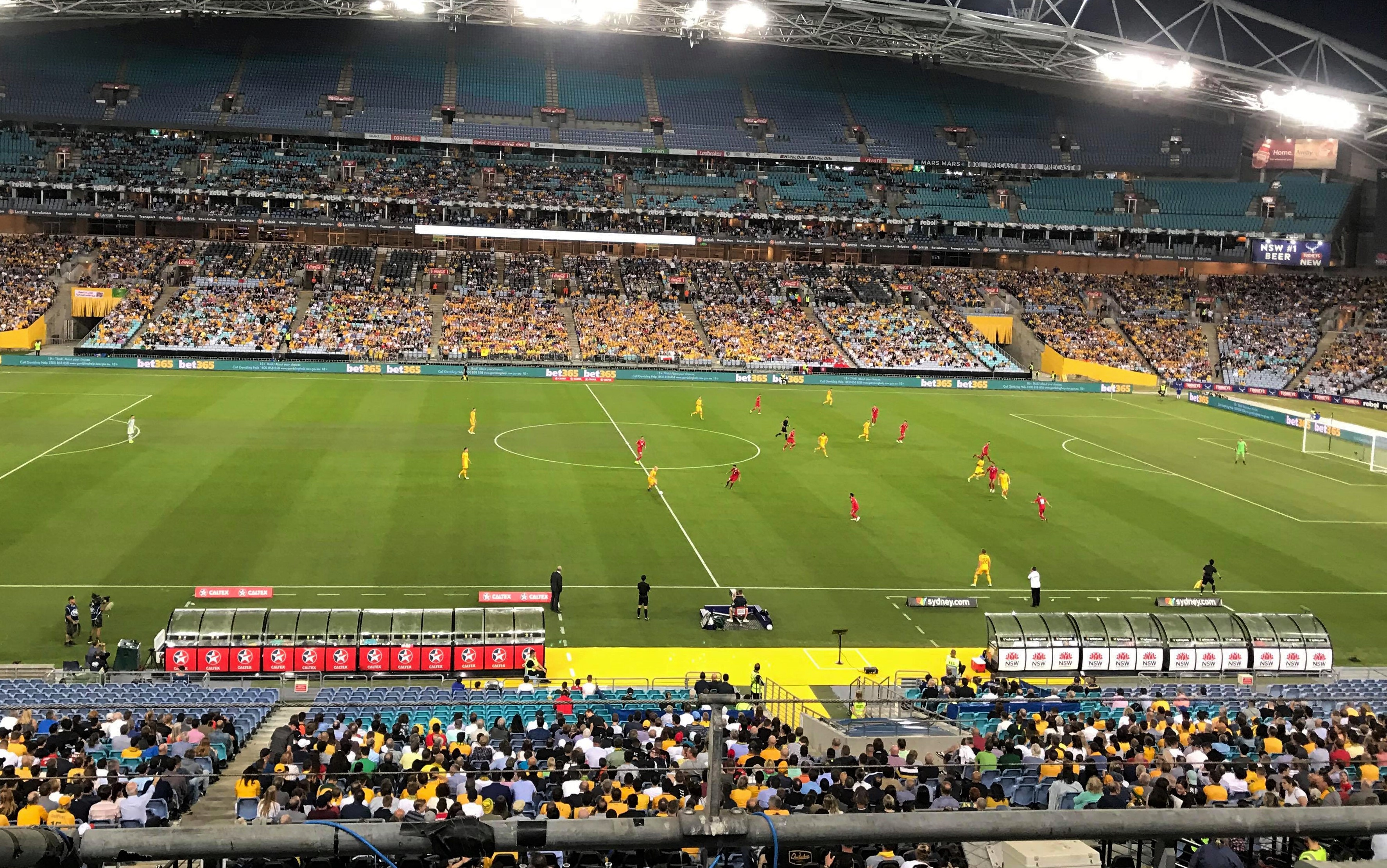Tim Cahill farewelled the Socceroos as stand-in captain on Tuesday night (November 20), running on to the pitch with 10 minutes left in the game, to one of the loudest roars you’d hear as a sports fan.
Supporters of the Socceroos’ opponents, Lebanon, had put the Aussies to shame for most of the match, consistently out-cheering them – even though the home team snared a 3-0 win for Cahill’s swansong.
During the singing of the Lebanese national anthem, you’d have thought Sydney’s ANZ Stadium was full of Lebanese fans, and during Advance Australia Fair you could have heard a pin drop if it weren’t for the music blaring from the speakers. Later, the beating of drums by Lebanon’s supporters completely drowned out thin attempts at an “Aussie, Aussie, Aussie, Oi, Oi, Oi!” chant.
But there was no secret as to what the spatterings of green and gold in the stands were saving their energy for. Cahill began warming up late in the second half. As he ran to the end of the field, the stadium rose to its feet. As he jogged back to the bench and changed into his playing strip, it rose again – and then again, even louder, when he shook his teammates’ hands, hugged coach Graham Arnold and walked over to the halfway line.
The crowd explodes as Tim Cahill takes to the field for his 108th and final appearance in green and gold.#socceroos #AUSvLEB #Cahill pic.twitter.com/UeCuZI4mGN
— John Hall (@JohnHall_59) November 20, 2018
Earlier, the crowd chanted “We want Cahill!” and “Timmy!” in anticipation of him joining the field.
Although Cahill wasn’t able to finish his career with the high of one last goal, he was given a guard of honour by his team-mates after full-time. “This is the only time you’re going to see me cry,” the soccer legend said in a post-match speech.
When farewelling a player of that stature, it’s natural to wonder what the future looks like for the national team. To some extent, our nerves were calmed during the match by the performance of 25-year-old, Scottish-born (to an Australian father) Martin Boyle.
In just his second outing in the green and gold, and his first time in the starting line-up, Boyle picked up two goals before half-time. For Australia’s third goal, it was Mathew Leckie who proved himself to be a super-sub. He came on in the 66th minute and took only two minutes to find the net.
Those goals tell the story of a match in which the Socceroos dominated possession, controlling the ball for two-thirds of the game, and in which Lebanon, despite being quick to move the ball up the field when they got it, couldn’t find the back of the net.
Whoda thunk the answer to Australia’s goal scoring woes would be a pacey winger from Aberdeen? #socceroos #AUSvLIB
— Ed Jackson (@edjacko) November 20, 2018
Cahill thanked his family, teammates and fans after the match. “It was enough for me to play for Australia at the start, but I tell you what, every time I’ve worn the green and gold, I’ve played with my heart,” he said.
“This is just as much for all of you as it is for me, so thank you very much, Australia.”
Cahill’s career may have come to an end, but his many fans will have fond memories of it. Speaking pre-game, 23-year-old Sam said: “I still remember when he scored our first World Cup goal in 2006. Didn’t watch much soccer before then but that World Cup got me hooked.”
Others recalled the class and beauty of his scoring ability. David, 30, spoke about the goal Cahill scored against the Netherlands in 2014 that was nominated for the FIFA Puskás Award (for the most aesthetically significant goal). “It was amazing, the cross was beautiful and then there was Timmy ready to slam it into the back of the net.”
A memorable goal in the 2015 Asian Cup, where Cahill jumped on to his back and kicked the ball over his head, captured the heart of many younger fans. Twelve-year-old James said: “He’s been my favourite ever since that ‘bicycle kick’ in the Asian Cup. I’ve tried doing it [myself] … I haven’t got it in yet.”
Of the world’s total population – around 7.5 billion, @Tim_Cahill has scored his 50 goals against 28 different nations representing a total of around 3.5 billion people.
Fair effort.— Adam Peacock (@adampeacock3) November 20, 2018
Having played 108 games for his country since debuting against South Africa in 2004, Cahill finished his career only one match short of the all-time record for the Socceroos, held by goalkeeper Mark Schwarzer, who chalked up 109 caps between 1993 and 2013.
Cahill is, though, the player to have scored the most goals (50) for the Socceroos, and is the first Socceroo to play in four FIFA World Cups (2006, 2010, 2014 and 2018).
Next up for the Socceroos is the Asian Cup in January. Australia, which is hoping to take out the tournament for the second time straight, is in a pool with Jordan, Palestine and Syria. – @JohnHall_59


